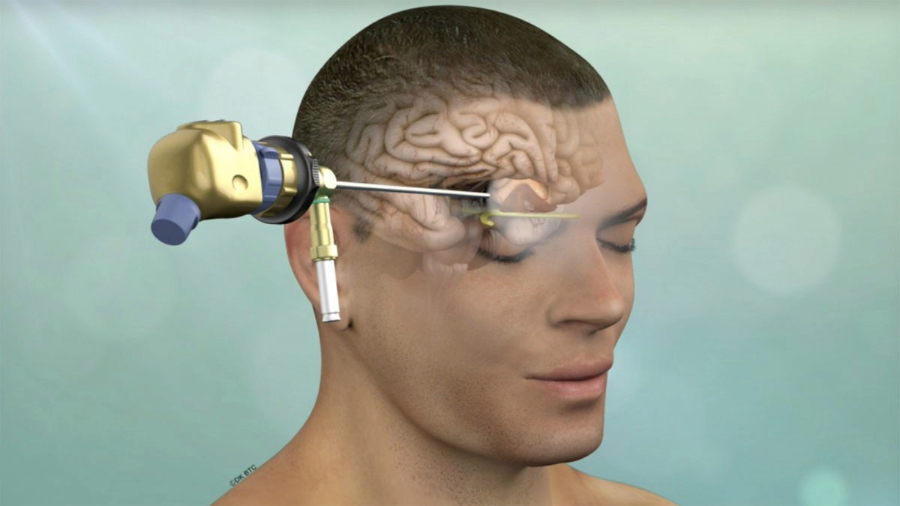Minimally Invasive Brain Surgery: High Precision, Quick Recovery
The development of minimally invasive techniques has resulted in a dramatic revolution in neurosurgery. These novel methods offer greater accuracy and efficacy with less trauma to the patient, which sets them apart from traditional methods. This blog takes readers on a tour through the development of brain surgery, following the move toward less invasive techniques that have transformed the specialty.
Redefining Accuracy: The Entire Complicated World of Small-Incision Brain Surgery
Its unmatched precision is the cornerstone of minimally invasive brain surgery. Using cutting-edge instruments and methods, neurosurgeons can navigate the complex anatomy of the brain with previously unheard-of precision. These methods minimize tissue damage, improve patient outcomes, and lower the likelihood of surgical complications. We learn more about how precision medicine is evolving in modern neurosurgery by delving deeply into the complex mechanisms at play.
Faster Healing and Return to Regularity
The quick recovery time that minimally invasive brain surgery offers patients is one of its most persuasive advantages. These state-of-the-art techniques promote faster healing by reducing tissue damage and trauma, allowing patients to return to their regular activities sooner. Here, we look at the elements that lead to quick recovery after minimally invasive surgery, providing insight into how patients can resume their life as soon as possible.
Overcoming the Tiny: Tools and Technologies for Neurosurgery That Is Less Invasive
Neurosurgeons have an extensive and ever-growing toolkit of devices and technologies at their disposal for minimally invasive treatments. Modern imaging methods and sophisticated instruments enable surgeons to navigate the intricate topography of the brain with unmatched accuracy. Understanding the nuances of these developments helps us to better appreciate the astounding accuracy and precision attained in contemporary neurosurgery.
Using a Patient-Centric Approach to Improve Results and Reduce Trauma
The philosophy of patient-centric minimally invasive brain surgery is fundamental. These methods put the health of the patient first by reducing surgical trauma and improving results. Neurosurgeons can customize treatment plans to optimize results while lowering risks by concentrating on the unique needs of each patient. A thorough analysis of the patient-centric principles that constitute the foundation of minimally invasive surgery provides us with an understanding of how these techniques are revolutionizing the field of neurosurgical care.
Overcoming Challenges: The Learning Curve for Minimally Invasive Neurosurgery
Although there is no denying the advantages of minimally invasive techniques, neurosurgeons face particular difficulties when using them. As surgeons adjust to new instruments and procedures, they must overcome a challenging learning curve in order to use these state-of-the-art treatments. This section discusses the difficulties neurosurgeons encounter when learning minimally invasive procedures and the methods they use to overcome these difficulties. Surgeons can master minimally invasive neurosurgery and overcome the learning curve by committing to further education and training.
Case Studies: Neurosurgery Success Stories with Minimally Invasive Techniques
Empirical case studies provide strong evidence of the revolutionary effects of minimally invasive brain surgery. These success stories demonstrate how the treatment of a wide range of neurological diseases, including tumors and vascular abnormalities, has been transformed by these cutting-edge treatments. We honor the significant impact minimally invasive surgeries have on patients’ and their families’ lives by showcasing the amazing results they have produced.
Inventing the Future: Progress in Minimally Invasive Neurosurgery via Innovation and Research
Neurosurgery’s future is defined by unrelenting innovation and research, which will propel ongoing development in less invasive procedures. Modern technologies are set to improve brain surgery accuracy and effectiveness even more, from robotic-assisted surgery to AI-powered decision support systems. This section provides a glimpse into the revolutionary potential of these innovative and cutting-edge advancements that are reshaping the field of minimally invasive neurosurgery.
Patient Empowerment: Understanding and Choosing Minimally Invasive Therapies
The foundation of patient empowerment in minimally invasive brain surgery is informed decision-making. We enable patients to take an active role in their treatment by giving them access to decision-making processes. This section explores the various aspects to take into account, ranging from expected results to possible hazards, while choosing minimally invasive therapy. Through promoting a cooperative approach between patients and healthcare providers, our goal is to guarantee that treatment choices are in line with each patient’s unique requirements and preferences.
An Innovative Stage in Neurosurgery
A turning point in the development of neurosurgery has been reached with minimally invasive brain surgery. These cutting-edge methods are changing the face of brain surgery by redefining precision, speeding recovery, and putting the needs of the patient first. As we look to the future, we may expect that further research and innovation will further raise the bar for healthcare, giving patients with complex neurological illnesses more hope and better results. Finally, we consider the revolutionary influence of minimally invasive neurosurgery and its long-lasting legacy within the neurosurgery community.
Source

